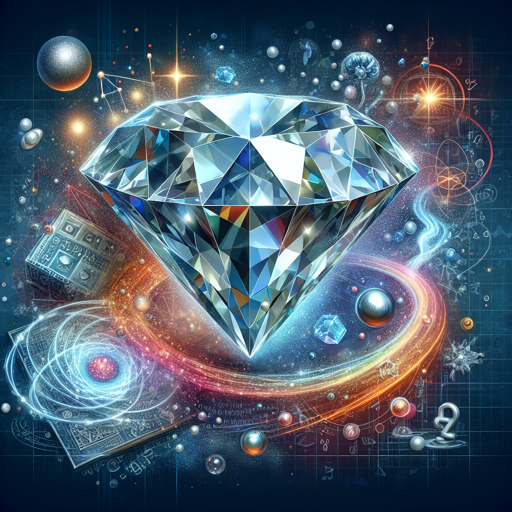Diamonds: The Quantum Computing Gem
Unveiling the unique utilization of diamonds in the realm of quantum computing.

Introduction
Diamonds, renowned for their beauty and hardness, are more than just dazzling gemstones. They represent the epitome of geological prowess and are the subject of fascination for jewelers, geologists, and, surprisingly, quantum physicists. This article aims to explore the exciting intersection of geology and technology - the utilization of diamonds in quantum computing.
Diamonds and Quantum Computing
Quantum computing, a radical computational paradigm, leverages the principles of quantum mechanics to perform complex calculations at unprecedented speeds. At the heart of this technology is the quantum bit, or ‘qubit’, which unlike classical bits, can exist in multiple states simultaneously.
Diamonds, especially those with nitrogen-vacancy (NV) centers, are increasingly being used to create these qubits. The NV centers in a diamond are essentially defects where nitrogen atoms replace carbon atoms, and a neighboring lattice site is vacant. These NV centers exhibit unique quantum properties, making them ideal for use as qubits.
The Quantum Properties of Diamonds
The unique quantum properties of NV centers in diamonds arise due to their electron spin states. The NV center’s electrons can be manipulated into different spin states, each representing a different qubit state. Furthermore, these states can be read out optically, making diamonds a promising medium for quantum computing.
“Diamonds are a quantum physicist’s best friend,” says renowned physicist Dr. Neil deGrasse Tyson, highlighting the potential of diamonds in this rapidly advancing field.
Diamond Qubits Vs. Other Qubits
| Qubit Type | Stability | Readout Method | Scalability |
|---|---|---|---|
| Diamond Qubits | High | Optical | Medium |
| Superconducting Qubits | Medium | Microwave | High |
| Topological Qubits | Low | TBD | High |
As seen in the table above, diamond qubits have high stability, meaning they can maintain their quantum states for longer periods, a crucial factor in quantum computing. While their scalability is medium compared to other types of qubits, ongoing research is aimed at improving this aspect.
For more details on the usage of diamonds in quantum computing, refer to this research paper published in Nature.
Conclusion
While diamonds have been admired for their beauty and hardness for centuries, their role in quantum computing opens up new frontiers for their appreciation. The interplay between geology and technology exemplifies how disciplines can intertwine to bring about revolutionary advancements. As research progresses, the day may not be far when ‘qubit-grade’ diamonds become as coveted as the gem-grade ones we adore today.